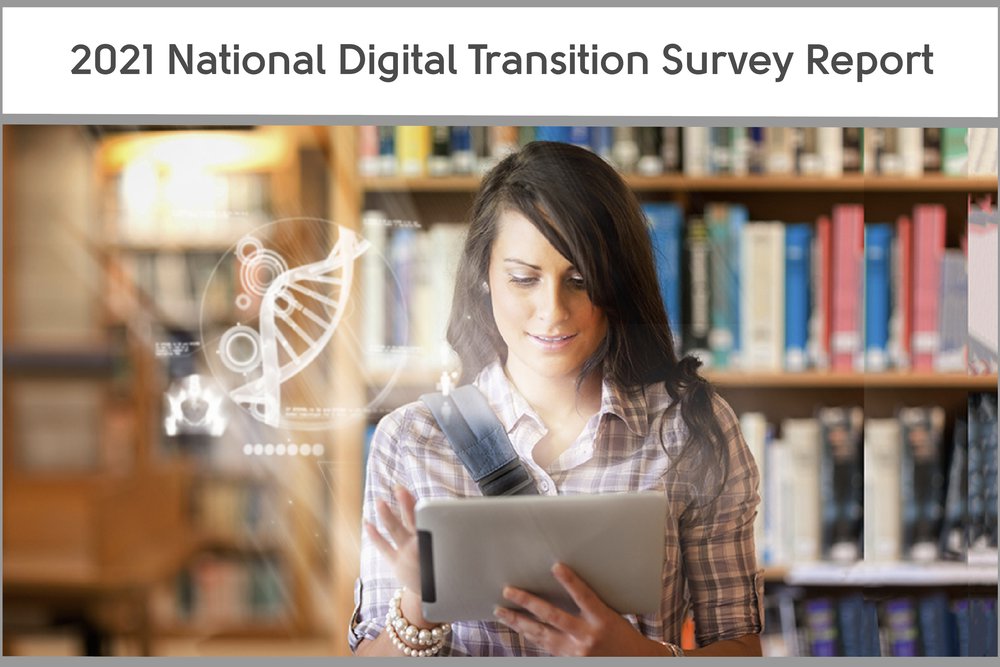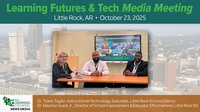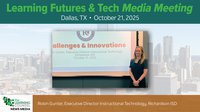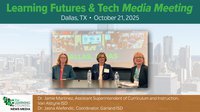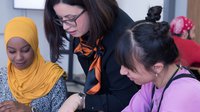Learning Counsel CEO and Publisher LeiLani Cauthen opened the Salt Lake City Digital Transition Discussion with a detailed briefing of the latest National Digital Transition Survey. In front of an enthusiastic early morning crowd, Cauthen laid out the results of the nation’s most comprehensive digital education survey. Almost 22,000 educators responded to the survey, completed in November 2021.
In the survey, both teachers and administrators cited the areas that produced the most pressure on their working lives. For administrators, it was time and space management (46 percent) and Attrition (losing students to nontraditional forms of education (20 percent). Teachers reported their top pressure points as student absences (30 percent and time management (29 percent).
37 percent, or 21 million students are “opt-outers - now in public online only, charters, private schools or homeschools, with another small percentage of remote learners who rarely attend physically on campus but “attend” via web conferencing but are enrolled.
Slight gains were reported for traditional public schools/districts due to new offerings such as online-only paths attached within the institution and by charters. Private schools lost students. Homeschooling up by another .6 percent and slowing in rate of growth to under 10 percent.
Estimates of pure traditional education without at least offering hybrid simultaneous flexibility (attending classes via web conferencing) is less than 50 percent of the market now.
When asked which schooling model is MOST in use today by your school or district, opinions varied between teachers and administrators.
Administrators Teachers
41% digital traditional 22.6% digital traditional
24% blended/flipped traditional 21.3% blended/flipped traditional
4% competency-based contemporary 5.6% competency-based contemporary
1% fully online contemporary (commercial market style) 4.5% fully online contemporary
2% fully online traditional 0% fully online traditional
24% hybrid simultaneous traditional 38.2% hybrid simultaneous traditional
1% hybrid logistics contemporary 5.6% hybrid logistics contemporary
3% hybrid hyflex 6.7% hybrid hyflex
Another very important area covered was the planning and scheduling of logistics, all part of the re-ordering of space and time. The number of staff in the school or district-and-schools who work more than 50 percent of the time on logistics was very low. Most districts had less than 10 people working primarily on logistics.
Also interesting was the amount of time teachers spent on the planning and execution for the digital resources. In 39 percent of cases, Teachers do all lesson planning and choosing of digital resources. In 29 percent of the cases, the district issues pacing guides and digital resource playlists with some recommended steps for lessons, but teachers do remaining lesson build-out.
Another telling statistic is teacher estimates of the number of digital content resources they personally keep on file or personal accounts -- not including professional-grade repositories with discrete learning objects, videos, ebooks or lesson documents in any file form, professional learning apps, and courseware the school provides. Two-thirds of teachers personally keep 100 – 500 content resources, one-sixth keep 500 – 100, and roughly one-eighth keep more than a thousand.
Equally telling is the fact that 26 percent of teachers custom build digital lessons on their own knowledge or textbooks for lecture and assignment-style delivery, and 13 percent use the open Internet, social media, and teacher subscription sites to gather individual files and images to put into their lessons.
Perhaps not surprising, 74 percent of teachers report feeling overwhelmed or burnt out, while 26 percent report doing okay.
When asked about other PD Needed, teachers’ biggest issues were as follows, indicating potential future address may be needed by schools:
- with 82.5 percent of respondents citing: newly having to teach students online via video conferencing and other tools.
- with 74 percent of respondents citing: new apps and subscription sites of digital resources.
- with 72.5 percent of respondents citing: emotional impacts with families, individual students, other staff and possibly self.
According to Cauthen, the top takeaways from the National Digital Transition Survey were as follows:
- The K12 market has fractured into more alternatives with far less traditional model schooling. Both administrators and teachers are interested in a delivery model shift and lean toward Hybrid Hyflex and Blended/Flipped (tied for highest interest.)
- Purchase intention through 2022 for digital curriculum remains high at over 63 percent of respondents. Hardware purchasing was up a bit and is expected to remain stably much higher than it was pre-pandemic.
- Workflow and elements of time and space logistics remain mostly manual – EdTech is moving into this space with Hybrid Logistics and a different kind of transformation.
- Teacher-centric lesson planning is a massive hidden time cost which lowers attention on students and is the real inhibitor of predictive analytics that would create full personalization.
- New types and new ways of offering PD are needed.

